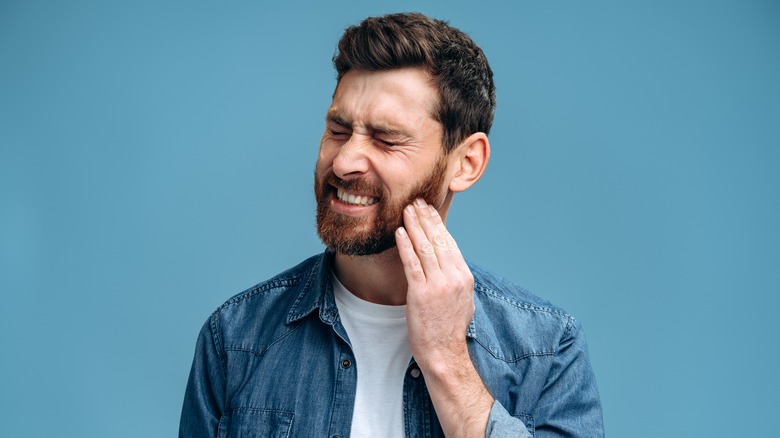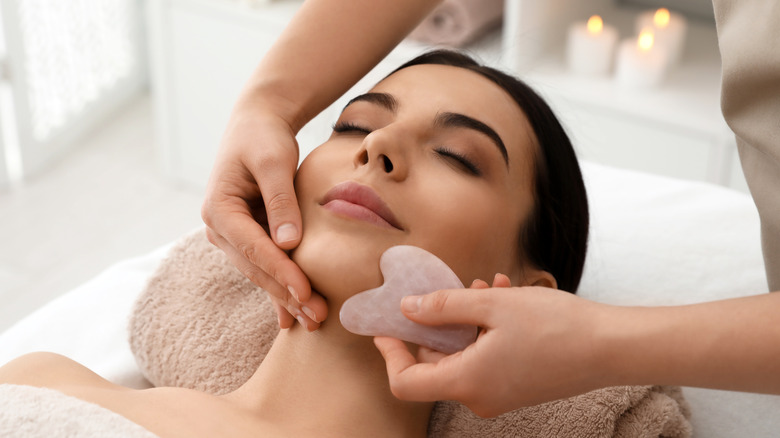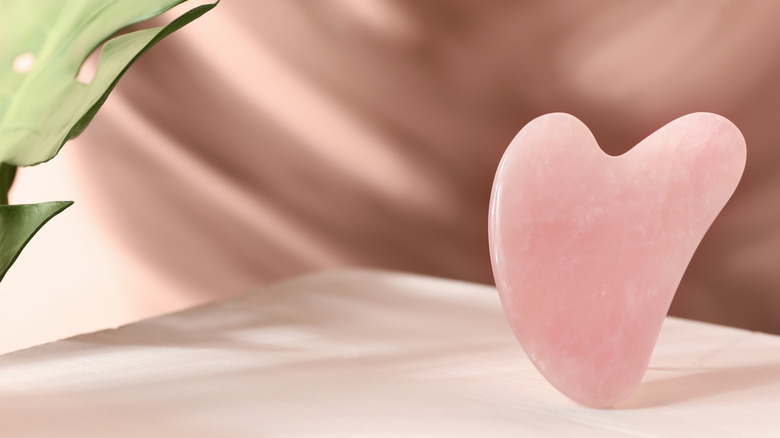Can A Gua Sha Help With TMJ Symptoms?
If you've experienced the excruciating agony that can come with temporomandibular joint (TMJ) pain, symptoms, and side effects, you know that there's very little you won't try to provide some kind of relief. The temporomandibular joint is the hinge joint on either side of the jaw, connecting the upper and lower jaw bones and allowing the motion required for chewing and speaking, explains the Mayo Clinic. TMJ disorders result when there are issues in one or both of these joints.
Individuals with TMJ disorders, also known as TMD, often exhibit a number of symptoms including clenching and grinding behaviors, known as bruxism. Additional symptoms of TMD can include having issues with the jaw locking up or feeling stiff, aches or pains around the ear, and discomfort around the facial muscles. Some individuals also experience a clicking or popping sound and sensation, though not all symptoms are present for all individuals.
There isn't a specific known cause for TMJ disorders. However, there are some factors, which are common for individuals who have been diagnosed with TMD. These include damage or erosion in the disk or joint areas. Some factors that are thought to contribute to the development of TMD include previous history of arthritis, jaw injury, certain connective tissue diseases, or long-term clenching or grinding unrelated to TMD.
Treatment options for TMJ symptoms
Treatment options for TMD can vary, depending on the symptoms experienced and the severity of each symptom. For some individuals, simple treatment options, like using a night guard or dental splint, can provide relief (via Mayo Clinic). In other cases, more severe options, like surgery, may be considered to help reduce the symptoms associated with TMD. Other treatment options can include medications, such as anti-inflammatories, antidepressants, and muscle relaxers, or holistic options, like physical therapy, can be used to help lessen the severity of TMJ symptoms experienced. However, while these options may provide some relief, for many patients, alternative treatments are still needed to reduce the agony of TMD symptoms.
When traditional Western medicine doesn't provide the right solution, many individuals seek answers, remedies, and treatment options from holistic Eastern medicine practices, such as gua sha (via Medical News Today) Gua sha is a skin scraping therapy process that originated in East Asia. The process involves using a specialized, hard, flattened, board or stone called a gua sha tool to move across the skin in long or short strokes in specific directions. This natural therapy forces microcirculation of the soft tissues, which increases blood flow. So how could incorporating gua sha therapy help with your TMJ disorder symptoms?
Can gua sha help with TMJ?
Gua sha therapy is said to help reduce inflammation, improve circulation, and promote healing in the area of the treatment, explains Healthline. However, more research is needed to back up the claim. Keep in mind, gua sha has been reported to help improve the symptoms and pain of TMJ disorders for a large number of patients. So whether the effects are scientific or pseudo, gua sha is a treatment that can help provide some level of relaxation to the muscles around the neck and jaw, as per Medical News Today.
As a therapy similar to that of a massage, gua sha is a fairly simple practice that can be incorporated into a nightly skincare routine. In addition to a gua sha tool, a lubricating oil appropriate for the area of the skin is needed. There are a number of videos and tips available online for the gua sha practice, but Medical News Today recommends seeking the training of a professional for the most effective treatment techniques.
While gua sha may need further research, the potential for relief might be enough for TMJ patients to consider the practice after careful consideration and consultation with a TMD specialist.



